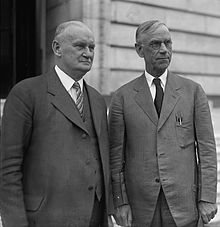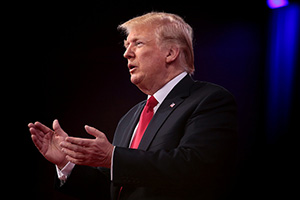
Looking Back at the Smoot Hawley Act after Trade Tariff Announcement This Week

Possible Trade War? It’s Time to be Looking Back at the Smoot Hawley Act of 1930

History has a cyclical way of repeating itself, and looking back at the Smoot Hawley Act could provide some crucial lessons right now. The big news of the week for the economy was President Trump’s announcement that the U.S. would impose tariffs on imports next week. Such a measure was not entirely unexpected. When Trump first came in to office he was toying with the idea. Now it has come to fruition, as countries exporting steel and aluminum to the United States will now have to pay a higher tariff (a 25% duty on steel and 10% on aluminum). The claim is that it will make domestic goods more competitive and give materials companies an edge.
It isn’t the first time the government tried this experiment though, and looking back at the Smoot Hawley Act shows the lesson to be learned is the opposite of the intended outcome. The protectionist Tariff Act of 1930 raised tariffs on 20,000 imported goods and, in the opinion of the majority of economic historians, exacerbated the Great Depression. The agriculture and manufacturing sectors suffered significantly. The 1930 bill had a multitude of fierce opponents, but President Hoover yielded to his party’s pressure and signed it into law.
The result was that key U.S. trading partners imposed counter-tariffs, which reduced U.S. exports by more than half in an all out trade war. Canada, the U.S.’s chief trading partner, imposed new tariffs on 16 goods that comprised 30% of the U.S.’s exports to its norther neighbor. This time, Canada is again willing to punch back in a trade war. Major trading partners like China issued similar cautions.
Dow Turns Negative for the Year after President’s Announcement

Trade war and tariff talk was the hot topic for the markets and economy. The stock market fell on the news, reversing much of its recent gain. After the tariff announcement Thursday, the market fell nearly 500 points. On Friday morning it dropped a further 300. By Friday afternoon, the Dow Jones had experienced its longest losing streak since September, and is overall negative for the year.
What this means for investors: In 1930, protectionist trade policy deepened the crisis of the Great Depression. In this case, we are approaching the end of a long bull run for stocks, and a potential trade war could worsen a correction and hinder recovery.
Gold Suffered This Week on Higher Rates, Stronger Dollar, but Rallied on Friday

Metals started out the week with a pull back. On Wednesday, Federal Reserve chair Jerome Powell testified before Congress. Powell stated again the case for gradual rate hikes. This boosted the dollar index, but hurt gold and stocks. Gold managed to tread water above the $1,300 mark though. At the low on Wednesday it reached $1,310. It started the week around $1,328 and was back above $1,320 in trading Friday.
What this means for investors: Powell also made a case for rising inflation. As it rises, gold should rise as well. Gold’s Friday rally was driven by safe haven buying against the tariff talk. There is also some fear that the economy is overheating and the Fed may need to ease back on interest rates.
Volatility Is Up as Fear Grows of Stock Bubble Burst
Even if the stock market continues to rise for the time being, it is in a different atmosphere than 2017’s rally. Last year we had ultra low volatility, whereas this year it is creeping ever higher and causing some worry.
What this means for investors:
The hedge fund manager who called the October 1987 crash just gave a stark warning from CNBC.
David Stockman: Market crash will be a ‘doozy’ from CNBC.
Stay Connected to the Markets. Subscribe Now to Get the Gold Market Discussion Delivered Every Sunday Directly to Your Inbox!
As always, I encourage you to speak with your broker at RME for more market updates. Expert brokers are available Monday-Friday from 9 AM- 5 PM or by special appointment after hours. Call today at 602-955-6500 or toll-free at 877-354-4040.

